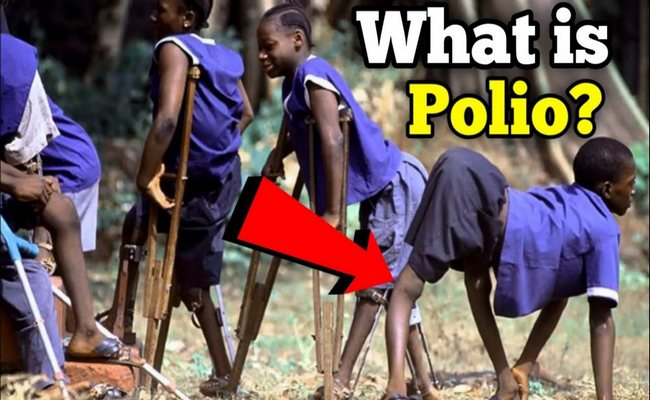Definition of Poliomyelitis or Polio:
Poliomyelitis or Polio is an acute viral illness that in its most severe from causes paralysis, difficulty breathing and sometimes death. It is an acute viral infection caused by an RNA virus affecting the central nervous system and infrequently resulting in paralysis. It is characterized by fever malaise, headache stiffness of neck and back with increased cells and protein in CSF.

Epidemiological Features of Poliomyelitis or Polio:
1. Occurrence:
Its occurrence is worldwide. It can occur sporadically, endemically or epidemically.
2. Ecological triad:
a. Agent factor:
- Agent: The causative organism is the poliovirus which has the three serotypes 1, 2,3 most out breaks of paralytic polio are due to type-1 virus.
- Reservoir of infection: Man is the only known reservoir of poliomyelitis.
- Infectious material: The viruses are found in the faeces and oro-pharyngeal secretions of an infected person.
- Period of communicability: The cases are most infectious 7-10 days before and after onset of symptoms.
b. Host factor:
- Age: Most cases occur in children aged around 5-7 years. Only a few cases occur in adults.
- Sex: Males more among children and female more preponderance among adult patient.
- Immunity: One attack gives a lifelong lasting immunity.
3. Environmental factors:
More likely in summer month. Infection rate is influenced by environmental sanitation.
4. Natural history:
a. Incubation period: Usually 7-14 days (range 3- 35 days).
b. Mode of transmission:
- Fecal-oral route: Directly through contaminated fingers where hygiene is poor and indirectly through contaminated water, milk, foods, flies, and articles of daily use.
- Droplet infection.
Sign and Symptoms of Poliomyelitis or Polio:
Clinical Features of Poliomyelitis or Polio:
1. In-apparent, asymptomatic infection: Occurs in 90- 95% cases.
2. Abortive illness: Occurs in 4-8% cases. It is the most common clinical form which is a mild febrile bobiroc0 illness characterized by-
- Headache,
- Sore throat,
- Nausea,
- Vomiting.
3. Non paralytic polio: Occurs in approximately 1% of cases. It is manifested by-
- Fever,
- Headache,
- Neck stiffness,
- Sings of meningitis.
4. Paralytic polio: Occurs in 1-2% cases asymmetrical flaccid paralysis deep tendon reflex absent without sensory lose.
Treatment of Poliomyelitis or Polio:
No cure for polio exists, the focus is on increasing comfort, speeding recovery and preventing complication. Supportive treatments include:
- Bed rest,
- Antibiotics for secondary infection (if any),
- Analgesics for pain,
- Portable ventilators to assist breathing,
- Physiotherapy to prevent deformity and loss of muscle function,
- A nutritious diet.
More questions related to this article:
- Define poliomyelitis.
- What is polio?
- Write down the epidemiology of poliomyelitis.
- What is poliomyelitis?
- What are the epidemiological features of poliomyelitis?
- Write down the clinical features and treatment of poliomyelitis.
- What are the clinical features and treatment of poliomyelitis?

Maria Khatun Mona is a Founder and Editor of Nursing Exercise Blog. She is a Nursing and Midwifery Expert. Currently she is working as a Registered Nurse at Evercare Hospital, Dhaka, Bangladesh. She has great passion in writing different articles on Nursing and Midwifery. Mail her at “maria.mona023@gmail.com”
